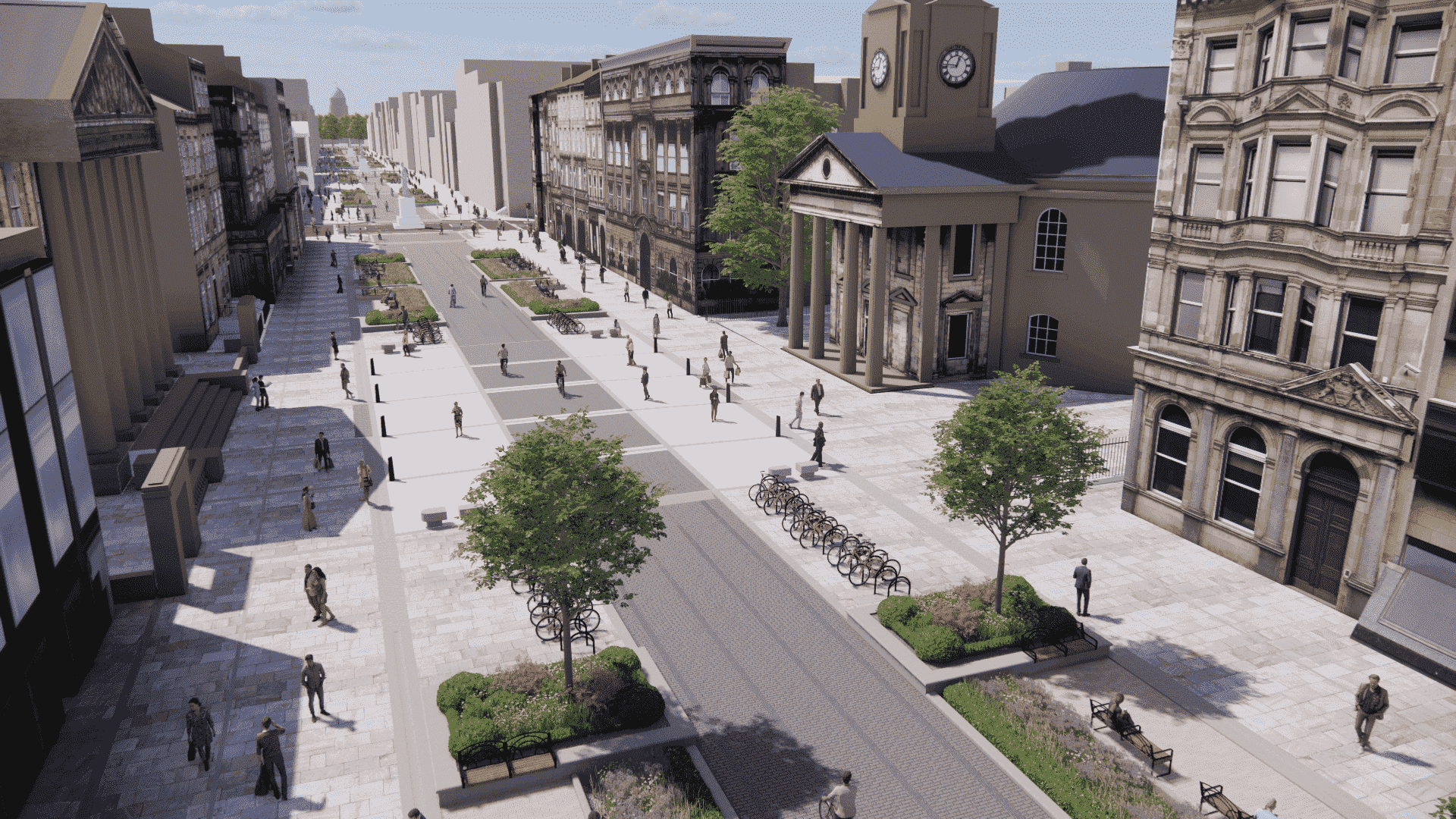
A final operational plan for Edinburgh’s George Street and first New Town project has been approved by the capital’s council.
It will see ‘significantly’ widened pavements, as well as the creation of a European-style cycling street, and removal of parking bays.
Automated bollards will provide additional public safety measures and enforce the pedestrian and cycling restrictions. The City of Edinburgh Council said that blue badge holders will still be able to park in disabled bays on George Street and the surrounding streets, whilst loading, servicing, and taxi access will be permitted during evening and morning hours.
The next stage for the project is to progress the promotion of all necessary statutory processes for George Street, which will provide the powers to enable construction of the project, which is scheduled for 2025.
The project is currently in the running as a finalist for the Scottish Design Awards in the Master Planning category, with it also shortlisted in the Pineapple Awards.
Councillor Scott Arthur, transport and environment convener at the City of Edinburgh Council, said, “In updating designs and operational plans for the GNT project, the project team has worked closely with the community, key stakeholders and elected members to develop proposals which will both enhance the space for all those travelling through and spending time in the area but also retain the First New Town’s unique historic value.
“I know the potential inclusion of trees on George Street will be welcomed by many, now their inclusion has been approved more work will be done to ensure the position and type of trees is sympathetic to the street’s iconic character.
“We have also listened carefully to the Edinburgh Access Panel and have agreed blue badge holders should have full access to up to 27 blue badge spaces in the George Street and First New Town area.
“This latest update marks an exciting milestone in the GNT project and it will allow us to move forward with the final stages of development before construction begins.”








